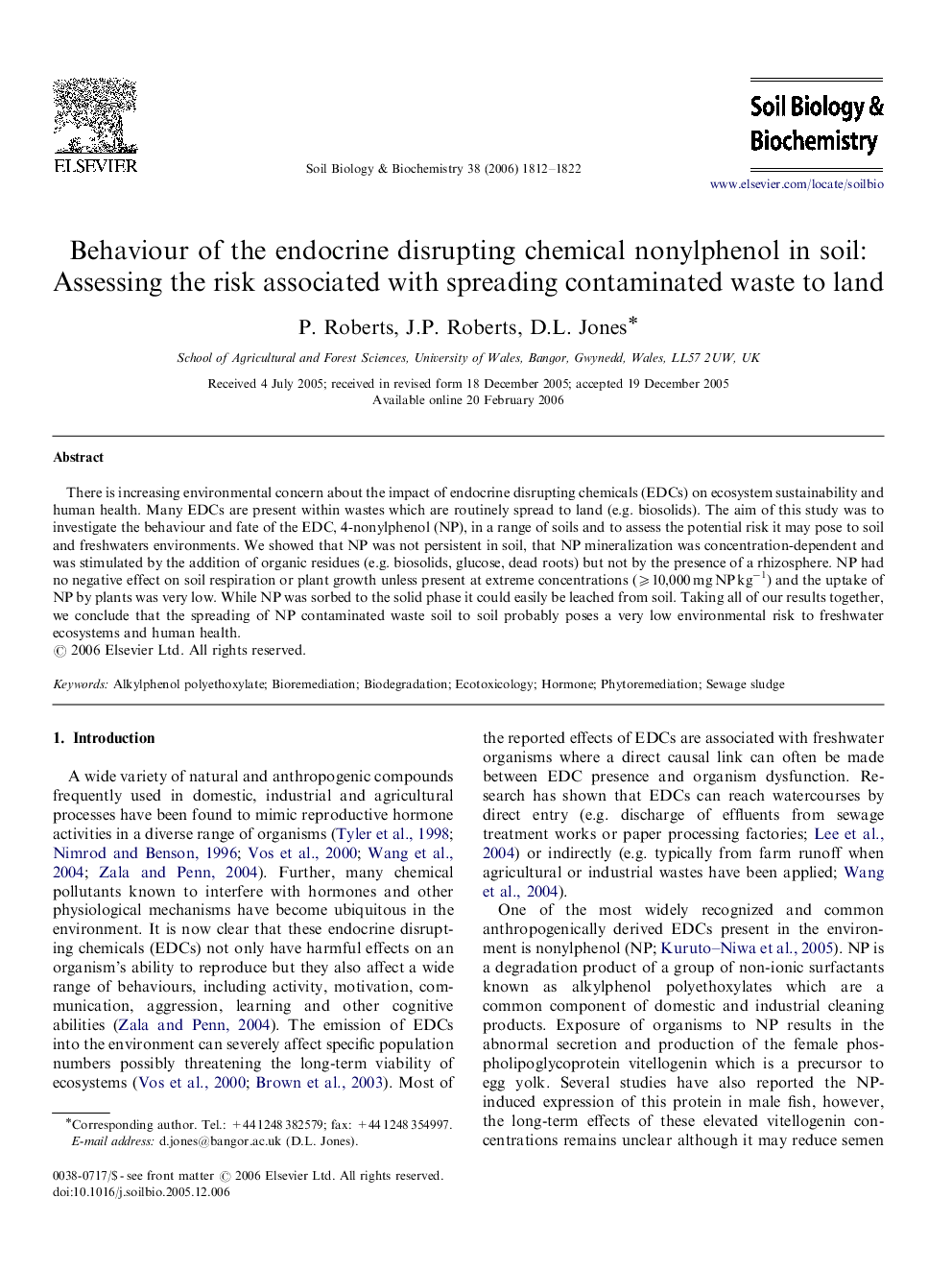| Article ID | Journal | Published Year | Pages | File Type |
|---|---|---|---|---|
| 2026584 | Soil Biology and Biochemistry | 2006 | 11 Pages |
There is increasing environmental concern about the impact of endocrine disrupting chemicals (EDCs) on ecosystem sustainability and human health. Many EDCs are present within wastes which are routinely spread to land (e.g. biosolids). The aim of this study was to investigate the behaviour and fate of the EDC, 4-nonylphenol (NP), in a range of soils and to assess the potential risk it may pose to soil and freshwaters environments. We showed that NP was not persistent in soil, that NP mineralization was concentration-dependent and was stimulated by the addition of organic residues (e.g. biosolids, glucose, dead roots) but not by the presence of a rhizosphere. NP had no negative effect on soil respiration or plant growth unless present at extreme concentrations (⩾10,000 mg NP kg−1) and the uptake of NP by plants was very low. While NP was sorbed to the solid phase it could easily be leached from soil. Taking all of our results together, we conclude that the spreading of NP contaminated waste soil to soil probably poses a very low environmental risk to freshwater ecosystems and human health.
